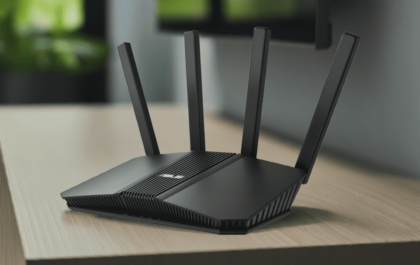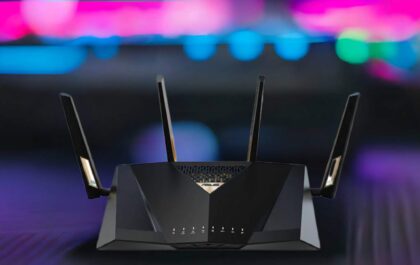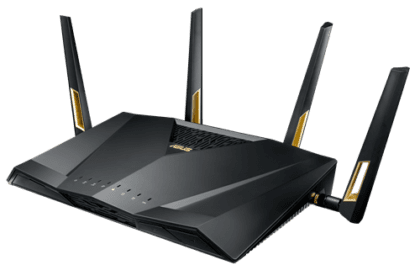Do Asus Routers Support VLAN? Can You Set Up A VLAN Network On An Asus Router? Which Asus Routers Support VLAN Setup?
Quick Overview of VLAN on Your Asus Router
Setting up a VLAN on your Asus router is easier than you think!
In This Article
Best VPNs For Your Asus VLAN
Best Asus FlashRouter For Setting Up VLAN
And, if you’re looking for the easiest way to set up your VPN, upgrading your wireless network router will help ensure a seamless streaming experience.
Asus RT-BE58U BE3600 WiFi 7 AsusWRT FlashRouter – WiFi 7 Speeds Up to 3600 Mbps / Optimized for VPN Privacy / Multi-Link Operation (MLO) Support / Improved Coverage & Stability SALE PRICE: $199.99 $349.99 | BUY NOW
Asus RT-BE88U WiFi 7 Merlin FlashRouter – Upgraded with Custom Merlin Firmware. / Next Gen WiFI 7 Update of Asus favorite model. / Wireguard & OpenVPN Compatible. / Works worldwide. SALE PRICE: $359.99 $499.99 | BUY NOW
Asus RT-AX88U PRO Merlin FlashRouter – Perfect for Max Wi-Fi Coverage / Recommended for 15+ Devices / Blazing-fast Wi-Fi 6 (Wireless-AX) Speeds / Enhanced with Merlin Upgraded Firmware SALE PRICE: $359.99 $459.99 | BUY NOW
Indeed! Before we move on to how to set up a VLAN connection, it’s important to establish a few important details.
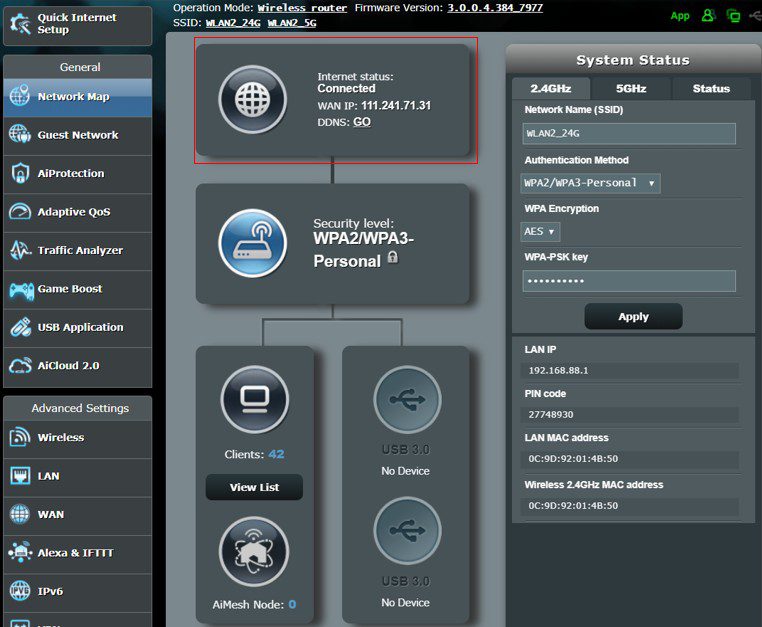
What is VLAN?
A Virtual Local Area Network, commonly known as Virtual LAN or VLAN, is a logical grouping of devices within a physical network. It allows network administrators to segment and isolate devices into separate broadcast domains, even if they are physically connected to the same network infrastructure. VLANs are created to enhance network flexibility, security, and performance.
What is VLAN Tagging?
VLAN tagging is a method used in networking to label Ethernet frames with a VLAN identifier. This tagging allows network switches to understand which Virtual LAN (VLAN) a particular frame belongs to, facilitating the isolation and segregation of network traffic.
When a device sends data, it attaches a VLAN tag to the frame, indicating its VLAN membership. Network switches use these tags to ensure that data is appropriately routed and delivered to the correct VLAN. VLAN tagging is essential for creating segmented and secure networks, enabling efficient resource utilization, and supporting complex network configurations in modern IT environments.
Do All Asus Routers Support VLAN Configuration?
At the moment, not all Asus routers support VLAN configuration.
Setting Up Your VLAN Profile On Your Asus Router
If you have supported Asus router, setting up a VLAN connection should be a simple process. Our handy guide will help you move through the process.
Step 1: Connect To Your Router Dashboard
Connect your computer to the router via wired or Wi-Fi connection and enter your router LAN IP or router URL http://www.asusrouter.com to the WEB GUI.
Step 2: Log In To Your Router And Access The VLAN Settings
Log into your router using your username and password.
Scroll down to Advanced Settings on the side panel.
Click on ‘LAN” button
Once you open the “LAN” Settings, go to the “VLAN” tab.
Once you’ve opened the VLAN tab, you’ll see two options on the right top-hand corner inside the VLAN section—VLAN and Profile. VLAN allows you to manage all your VLANs, while Profile allows you to add, delete, and adjust the settings of the VLANs you’ve set up.
Start by creating a VLAN profile in the “Profile” tab. You can any number for VLAN ID from 1 to 4094. However, make sure that you haven’t assigned that port to any ID to avoid conflicts.
Creating your VLAN Profile
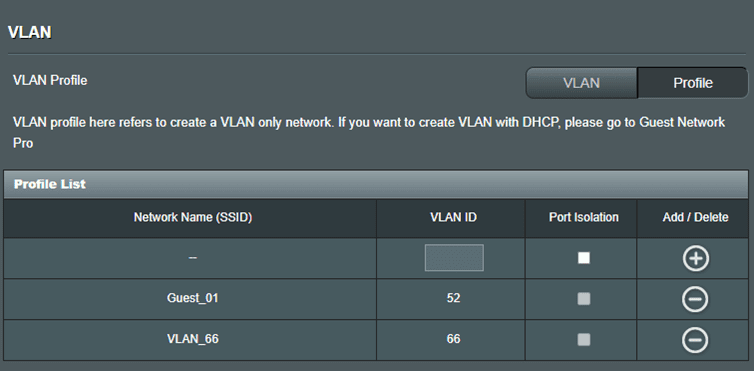
Now that you’ve got your VLAN profile, its important to configure the proper settings.
Network Name (SSID)
That refers to what you’d like the network to be called.
VLAN ID
The port number that you want for the VLAN.
Port Isolation
If you want to isolate specific devices on your network, port isolation, or private VLAN, allows you to do that. With port isolation, you can restrict how traffic travels between ports. Specifically, traffic can only travel to uplink ports. This prevents ports from sharing data with each other and improves the security of your VLAN. Asus router users have a simple checkbox that allows them to turn this feature on and off.
Add/Delete
If you need to add a VLAN profile or delete an existing profile, its as simple as clicking a button.
Step 3: Setting Up Port Isolation
What Is Port Isolation?
Port isolation in the context of VLANs refers to a feature that restricts communication between devices connected to the same switch port within the same VLAN. It’s also known as “private VLANs” or “port isolation VLANs.”
This feature enhances network security by isolating devices from each other while still being part of the same VLAN. Port isolation is often used in scenarios where devices require connectivity to the same VLAN but should not communicate with each other for security or other reasons.
What Are The Port Isolation Settings that Asus Routers Support?
Asus Routers support Port isolation for both cases with or without DHCP enabled. Let’s explore what that means!
What Is The Difference Between Port Isolation With Or Without DHCP?
VLAN Network with VID and No DHCP
Port Isolation Using DHCP
IP Address Assignment
Static IP address assignment; devices are manually configured with IP addresses, subnet masks, gateways, and DNS settings.
Dynamic IP address assignment through DHCP server; devices obtain IP addresses automatically.
Network Management
Complex network management; IP addresses must be manually configured for each device, which can be time-consuming and prone to errors.
Simplified network management; DHCP server automates IP address assignment, reducing manual configuration effort and potential errors.
Potential for IP Address Conflicts
Higher risk of IP address conflicts if devices are not carefully managed and configured with unique addresses.
Reduced risk of IP address conflicts due to automated assignment by the DHCP server.
Scalability
Potentially less scalable, especially as the network grows, because each new device requires manual IP address configuration.
More scalable; DHCP accommodates new devices easily through configuration of additional scopes or address pool expansion.
Potential Use Cases
Small, static networks with a limited number of devices.
Situations where precise control over IP addresses is necessary.
Larger networks with many devices where automation is essential for efficient management.
Environments where rapid scalability is required as new devices are added.
Advantages
Precise control over IP address assignments.
Useful for small, static networks with fixed configurations.
Automated IP address assignment simplifies network management.
Efficient resource utilization and reduced risk of IP address conflicts.
Disadvantages
Time-consuming and error-prone manual configuration.
Limited scalability, especially in larger networks.
Requires DHCP infrastructure setup and maintenance.
Dependency on DHCP server availability.
Setting Up A VLAN-Only Network (No DHCP)

As outlined above, Asus allows users to create a VLAN network with VID and either with or without DHCP. By default, DHCP is not enabled, so you need to manually authenticate each device. If that’s how you want your network to behave, simply leave it as is.
In the image shown above, we’ve created a “VLAN-only-Network.” That means a network with VLAN ID but without DHCP. To put it more simply, that means devices that connect to the VLAN need to be manually configured.
If you want to enable DHCP on this VLAN network, you can go to Guest Network Pro (SDN), advanced settings for customization.
Setting Up A VLAN Network With DHCP

If you want the devices connecting to your network to have IP addresses automatically assigned, you’ll need to enable DHCP. To do so, you’ll need to go to the Guest Network Pro under advanced settings.
What Is Guest Network Pro?
Guest Network Pro is an advanced networking feature that allows users to more conveniently compartmentalize their networks. It is currently not available on all Asus routers.
To access “Guest Network Pro,” settings, click the “Guest Network Pro” tab on the left-hand main menu (under Network Map and AiMesh).
Once there, you should see a list of all the networks you’ve created (including your VLAN network that we’ve created above) under “Profile List”
Click on the network you want to edit, and you should see a number of settings, like the one shown above.
Click the tab that says “Advanced Settings.”
Under there, you’ll see an option for “Enable the DHCP Server.”
Press the toggle to enable DHCP.
Save Your Changes to the Network Settings
What is A Software-Defined Network (SDN)?
SDN, or Software-Defined Networking, is a modern approach to network management and control that uses software-based intelligence to make networking more flexible, scalable, and programmable.
In traditional networking, network devices like switches and routers have their control plane (responsible for routing decisions) and data plane (responsible for forwarding data packets) tightly integrated within the hardware. SDN decouples these two planes, allowing centralized software control over network devices. SDNs are important for managing VLANs.
On Asus routers, creating guest networks and other special configurations falls under SDN settings.
What Other Networks Can You Create with Guest Network Pro?
You have the option of choosing between several types of networks:
- Guest Network
- Kids Network
- IoT Network
- VPN Network
- Customized Network
Adjust Your VLAN Settings
Now that you’ve set up your VLAN network, you need to define how devices that connect to the VLAN network are organized and how they communicate with one another. The two main ways to do that are via VLAN profiles and VLAN modes.
What Is A VLAN Profile?
VLAN Profiles specify the unique characteristics and settings for each group of devices (VLAN) in the network.
What Is A VLAN Mode?
VLAN Modes dictate how individual network ports should behave regarding these groups, whether they are part of a single group (access mode) or can communicate with multiple groups (trunk mode).
Adjusting Your VLAN Profile Settings On Your Asus Router
Start adjusting your VLAN profile settings, return to the VLAN tab, and make your way to the “VLAN” subsection.
Once there, you should see something like the image below.
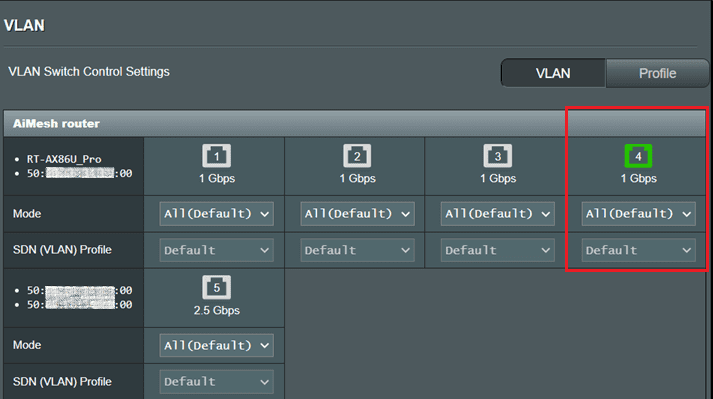
Let’s start by adjusting the mode. Your Asus VLAN settings offer the following options: default, access, or trunk?
What's The Difference Between Access and Trunk Mode?
Access Mode
Trunk Mode
VLAN Assignment
Assigns a single VLAN to a switch port.
Allows multiple VLANs on the same port.
Tagging
Sends traffic without VLAN tags (untagged).
Devices connected to trunk ports can send and receive traffic from multiple VLANs; they are aware of VLAN tags.
VLAN Awareness
Devices connected to access ports are typically unaware of VLANs; they operate in a single VLAN.
Reduced risk of IP address conflicts due to automated assignment by the DHCP server.
Typical Use
Used for end-user devices in a single VLAN.
Used for interconnecting network devices and carrying traffic for multiple VLANs.
Common Uses
Computers (e.g., desktops, laptops), printers, IP phones.
Switches (for connecting to other switches), Routers (for routing traffic between VLANs), Network servers (e.g., file servers, web servers).
Purpose
Segregates devices into separate VLANs for network segmentation and security.
Enables the transportation of multiple VLANs over a single physical link, facilitating communication between devices in different VLANs.
If you’re looking for a simple explanation, Access Mode ports are linked to a single VLAN profile, while Trunk Mode ports are not typically associated with a specific VLAN profile at the port level. By default, Asur routers all tagged and untagged packets onto the VLAN
What Is The Difference Between Default, Access, and Trunk Mode in Asus VLAN Profile Settings?
Default Mode
“All(Default)”, which allows all tagged, untagged packets.

Access Mode
Allow a selected VLAN. The images below offer two examples of VLAN Access Mode. Image 1 features the network “Guest_01,” while Image 2 features a previously set up VLAN network.
Trunk mode
You allow all tagged packets (all untagged packets are dropped), or you can allow a specific VLAN profile.
Image 1 features the “All tagged packets” setting, while Image 2 features a specific VLAN network.
What Is The Best Router For Setting Up a VLAN Connection on An Asus FlashRouter?
FEATURES
- WiFi 7 Speeds Up to 3600 Mbps
- Optimized for VPN Privacy
- Multi-Link Operation (MLO) Support
- Improved Coverage & Stability
FEATURES
- Upgraded with Custom Merlin Firmware.
- Next Gen WiFI 7 Update of Asus favorite model.
- Wireguard & OpenVPN Compatible.
- Works worldwide.
FEATURES
- Easy Router Setup via Asus App
- Blazing-fast Wi-Fi 6 (Wireless-AX) Speeds
- Elevated VPN Setup + Implementation Options
FEATURES
- Perfect for Max Wi-Fi (30+ Simultaneous Connections)
- Blazing-fast Wi-Fi 7 (Wireless-BE)
- Dual 10 Gbps Ports
- Reliable Wi-Fi Multi-link Operation
FEATURES
- Perfect for Max Wi-Fi Coverage
- Recommended for 15+ Devices
- Blazing-fast Wi-Fi 6 (Wireless-AX) Speeds
- Enhanced with Merlin Upgraded Firmware
FEATURES
- For Max Wi-Fi Coverage
- Perfect for 30+ Devices
What Is the Best VPN for Using On Your VLAN?
If you want to use a VPN on your VLAN network, choose one of these customer favorites!

PER MONTH
- 1700+ Servers across 60+ countries
- Integrates with the Tor anonymity network
What Is the Full List of Asus Routers That Support VLAN Configuration?
The VLAN feature is available on the many recent Asus models including GT-AX11000 Pro, GT-AX6000, ROG Rapture GT-AXE16000, RT-AX86U Pro, RT-AX88U Pro, ZenWiFi Pro ET12, ZenWIFI Pro XT12.
Already Have an Asus Router?
If you already have an Asus router (or any other router) and want it upgraded, our networking experts can help optimize your network with our Flash My Router option.


FLASH MY ROUTER SERVICE INCLUDES:
- 1-on-1 Session With Expert Technician
- Basic Internet/Wi-Fi/VPN Setup
- Open Source Firmware "Flash" Upgrade
- Includes a $30 Service Credit
Need Help Choosing A Router?
If you need help choosing a router, we have the perfect tool to help you choose the router of your dreams!





